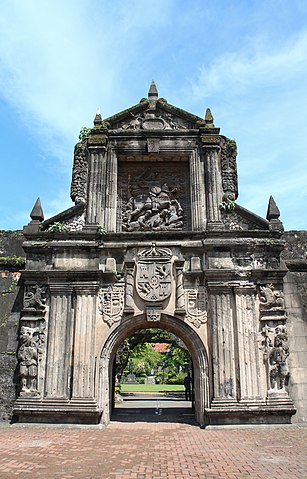Fort Santiago, located within the heart of Manila, Philippines, is a historic fortress with a rich and storied past. Here’s your guide to discovering the history and significance of Fort Santiago:
Key Highlights of Fort Santiago:
- Historical Significance: Fort Santiago is a significant historical site that has played a pivotal role in the Philippines’ history. It was originally built by Spanish conquistador Miguel López de Legazpi in 1571.

- Location: Fort Santiago is situated at the mouth of the Pasig River, overlooking Manila Bay. It was strategically positioned to protect the city and harbor from foreign invasions.
- Spanish Colonial Era: During the Spanish colonial period, Fort Santiago served as the military headquarters and residence of the Spanish governor-general. It was a key defense fortification and also housed political prisoners.
- Dr. José Rizal: Fort Santiago is famously associated with the national hero of the Philippines, Dr. José Rizal. He was imprisoned within the fort in 1896 before his execution. A shrine and museum dedicated to Rizal are now located in the area.
- Dungeons and Cells: The fort features dungeons, prison cells, and torture chambers where countless Filipinos were incarcerated, tortured, and executed during Spanish rule. The dungeons serve as a somber reminder of the country’s struggles for independence.
- Spanish Architecture: The fort showcases well-preserved Spanish-era architecture, including thick stone walls, bastions, and the iconic gate with the Spanish coat of arms.
- Rizal Shrine: The Rizal Shrine is a museum located within the fort that houses various artifacts, memorabilia, and artworks related to Dr. José Rizal’s life and the Philippine Revolution.
- Gardens and Courtyards: The fort also boasts beautiful gardens and courtyards, providing a serene contrast to its dark history. It’s a peaceful place to stroll and reflect on the past.
- Sound and Light Show: A nightly sound and light show at Fort Santiago narrates the history of the Philippines, from its pre-colonial roots to the struggle for independence.
- Access: Fort Santiago is easily accessible from the Intramuros district of Manila. Visitors can cross a drawbridge over a moat to enter the fort.
- Intramuros: Fort Santiago is part of the Intramuros, a well-preserved historic walled city within Manila. Exploring Intramuros allows you to take in the historical and cultural richness of the area.
- Cultural and Historical Events: The fort occasionally hosts cultural and historical events, exhibitions, and performances, which provide insights into the Philippines’ heritage.
Fort Santiago is a symbol of both the Philippines’ tumultuous history under Spanish colonial rule and its heroic fight for independence. It’s a place where visitors can pay homage to Dr. José Rizal, reflect on the nation’s struggles, and appreciate the rich cultural and historical heritage of the Philippines.











